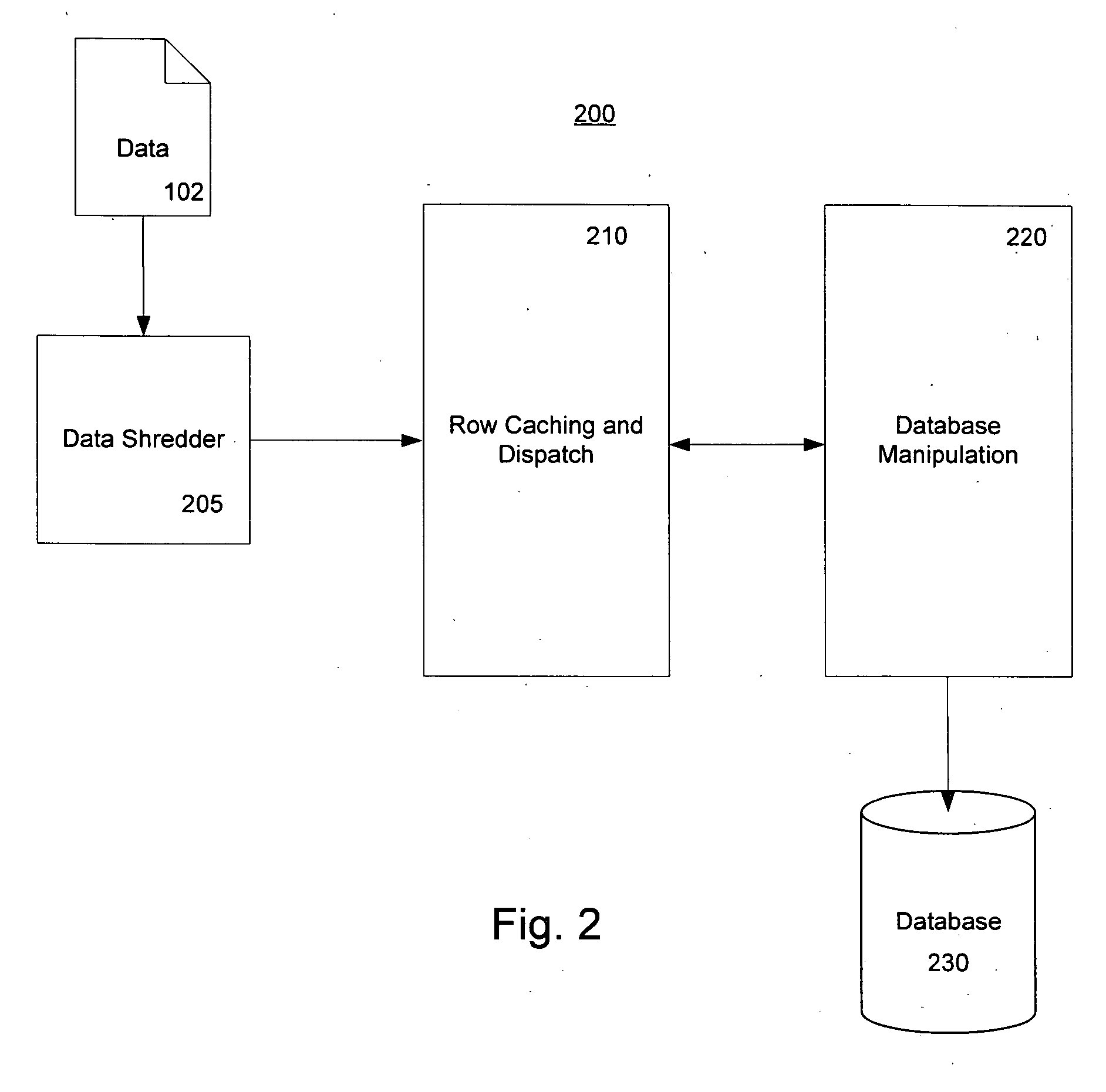Method and system for importing data
a technology for importing data and data, applied in the field of database computing, can solve the problems of engulfing the database management function, limiting the speed at which tables destined for data are made available, and the amount of data involved tends to grow. , to achieve the effect of shortening the operation tim
- Summary
- Abstract
- Description
- Claims
- Application Information
AI Technical Summary
Benefits of technology
Problems solved by technology
Method used
Image
Examples
Embodiment Construction
Exemplary Embodiments of the Invention
[0020]FIG. 2 is a depiction of a system 200 for transferring tabular data to a target database. As described above, typical input data 102 is provided to a data shredder 205. The data shredder performs the task of providing ordered rows of data at the shredder output. This function is well known in the art and the output rows may representing a structure of the input data. As an aspect of the invention, the ordered rows from the shredder 205 are input to a row caching and dispatch function 210 that serves to form the rows into batch tables.
[0021] The row caching and dispatch component 210 is responsible for caching and processing the batches tables in the right order. This row caching and dispatch function 210 maintains a structure, for example, a graph, of the batch table dependency and what batch tables are ready to be provided as an output. The row caching and dispatch 210 also controls the number of concurrent sessions opened against the t...
PUM
 Login to View More
Login to View More Abstract
Description
Claims
Application Information
 Login to View More
Login to View More - R&D
- Intellectual Property
- Life Sciences
- Materials
- Tech Scout
- Unparalleled Data Quality
- Higher Quality Content
- 60% Fewer Hallucinations
Browse by: Latest US Patents, China's latest patents, Technical Efficacy Thesaurus, Application Domain, Technology Topic, Popular Technical Reports.
© 2025 PatSnap. All rights reserved.Legal|Privacy policy|Modern Slavery Act Transparency Statement|Sitemap|About US| Contact US: help@patsnap.com



